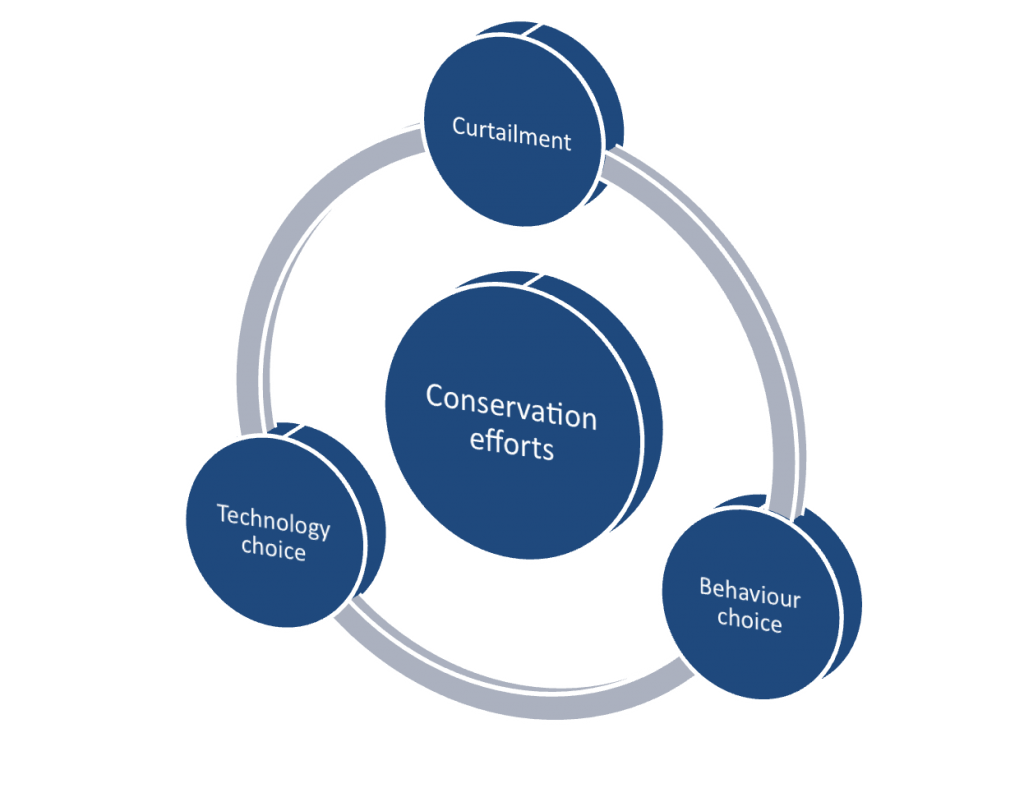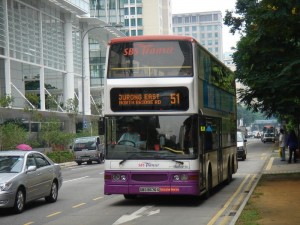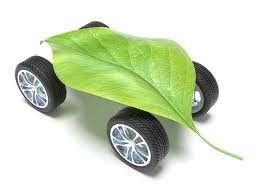However, the focus of this website will be the three broad categories of behaviors proposed by Clayton and Myers (2009): Curtailment, behavior choices and technology choices. These behaviors will share some overlap with the abovementioned categories. Each of these behaviors can be targeted for conservational efforts.
Classification of Pro Environmental Behavior
Any individual can partake in more than one of the three types of behaviour at any one time. Let us now examine each of these behaviors in detail.
Curtailment
Curtailment behaviors are the based on the idea that consuming less and reducing the usage of equipment and energy benefits the environment.
Here are some examples of curtailment behavior you can undertake:
- Reduction in purchasing; Buying only what you need
- Reduction in energy use. In the page “Links & Resources”, you can click on the link under Saving Energy to find 100 ways of conserving this previous resource
- Reduction in water use. In the page “Links & Resources”, you can click on the link under Saving Water to find 100 ways of conserving this previous resource)
Curtailment efforts require changing strong habits that people are generally comfortable with and hence are often seen as a personal sacrifice.
Behavioral Choice
This category of behavior involves decisions that no longer surround whether or not to do something, but how to do it (Clayton & Myers, 2009). In this category of behavior, the focus is not about consuming less of something. Rather, it focuses on doing things in a different way, with less environmental impact. By endorsing such a behavior, the same level of comfort and affluence people are used to can be maintained or continued. What is different is the way people try to achieve that level of affluence and comfort.
Here are some examples of behavior choices you can make:
- Using public transportation
- Recycling
- Reusing
- Buying Organic Products
Source: http://theonlinecitizen.com/2007/09/public-transport-uniquely-singapore-f1-or-f9/
Source: http://www.urbanrail.net/as/sing/singapore.htm
Source: http://www.forbes.com/2008/04/17/green-habits-poll-oped-cx_cfi_0418habits.html
You will find subtle overlaps between the concepts curtailment and behavioral choices. Personally, I thought using public transportation could also be classified under curtailment behavior because we cut down on the consumption of fuel. In reality, much behavior cannot be properly classified under one category of behavior.
Take some time today to think about what you have been doing for the environment so far and how many categories one behaviour can fall under!
Technology Choice
This category of behavior involves buying or using technological innovations so that the human impact on environment can be lessened.
Examples of technology innovation that are environmental:
- Hybrid cars
- Energy efficient light bulbs
- Low-flow showerheads
Source: http://www.forbes.com/2008/04/17/green-habits-poll-oped-cx_cfi_0418habits.html
This category of individual behavior is more effective than others because it requires onlyone decision to have a long-lasting impact whereas the other categories of individual behaviors mentioned required persistent effort. Also, people often view the purchase of such technology innovations as improving the quality of their lives. (Clayton & Myers, 2009).






